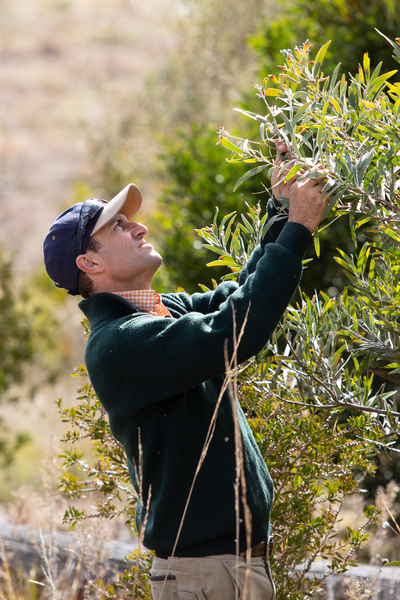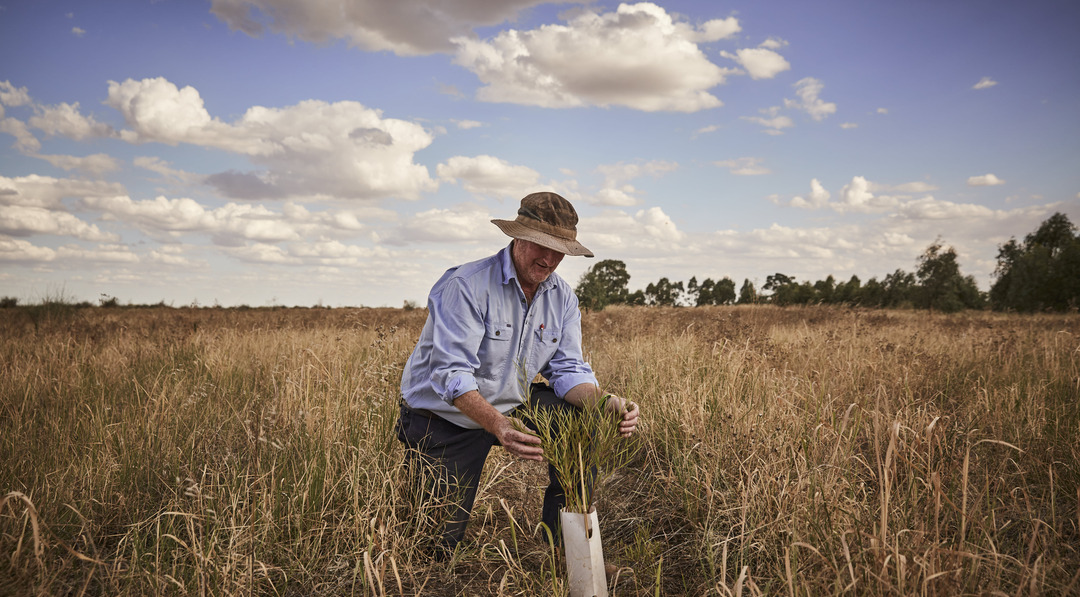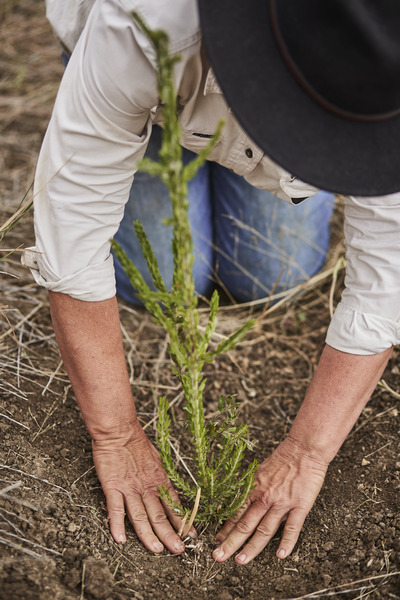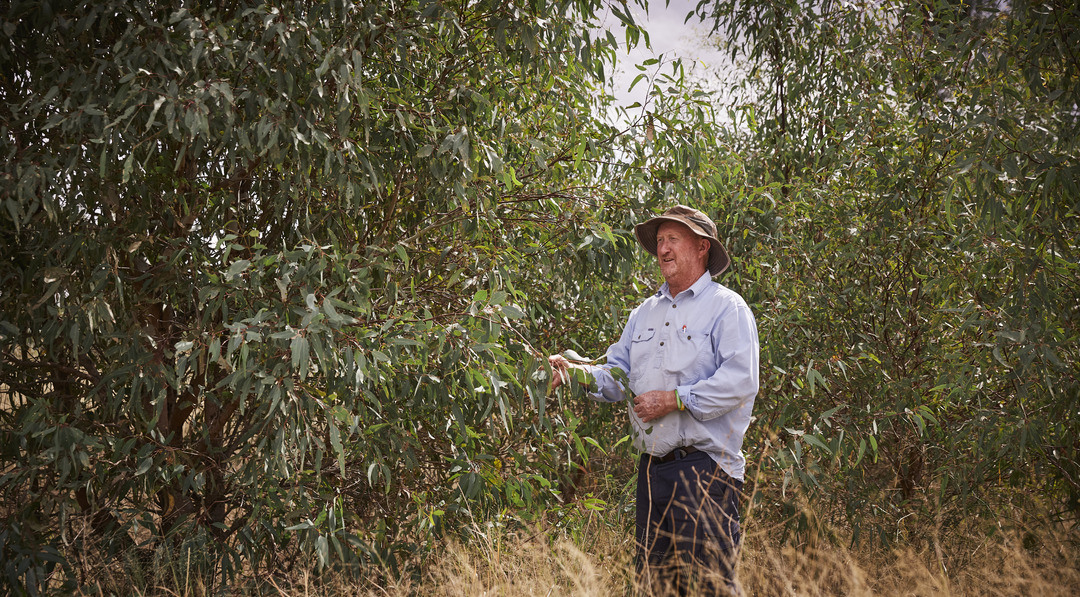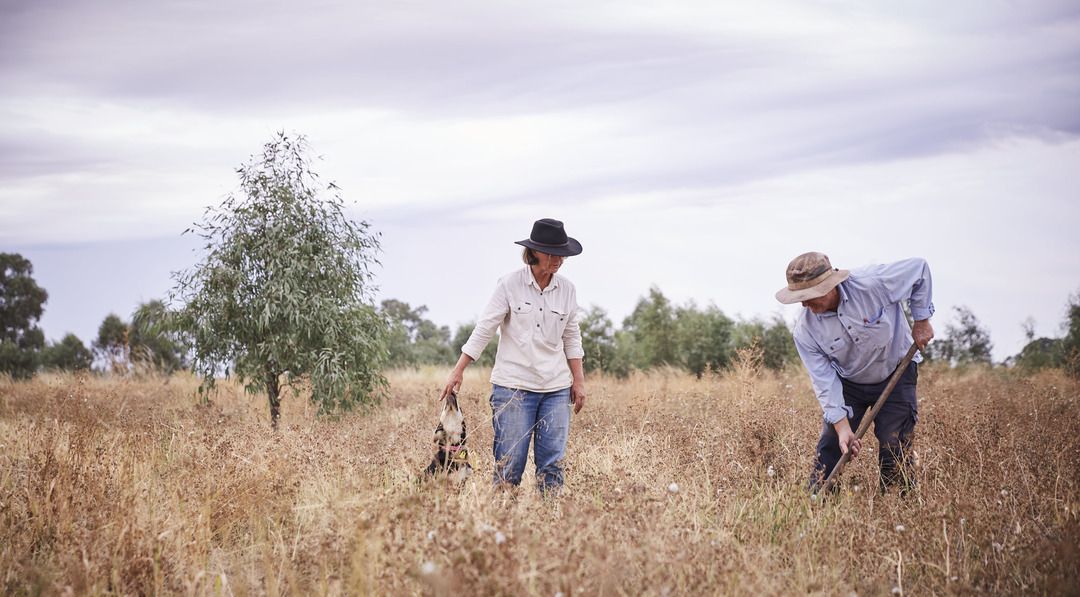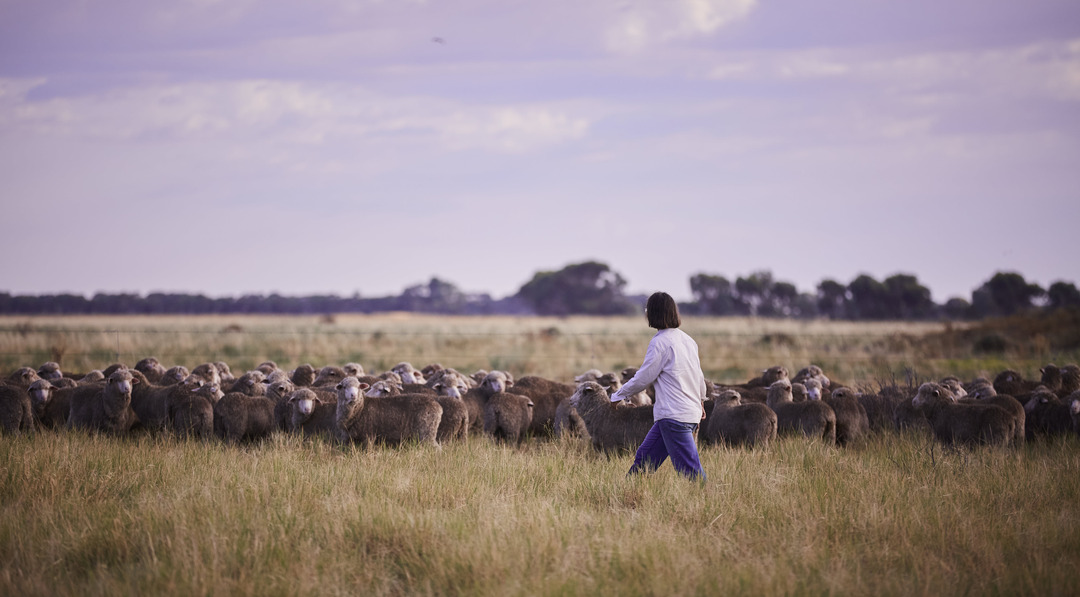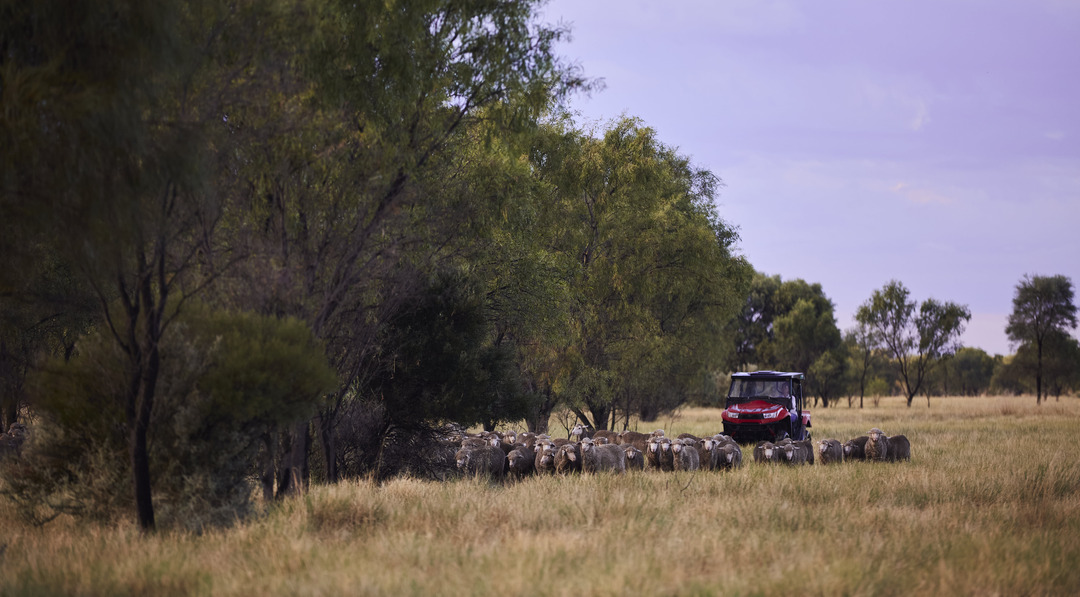Woolmark welcomes an AU$4 million grant from the Australian Government to kickstart its ground-breaking Australian Wool Industry Insetting Program as part of the recently unveiled Woolmark+ roadmap. The program will connect apparel brands with Australian woolgrowers looking to reduce emissions through nature-based solutions, with Woolmark spearheading the industry’s move towards nature positive outcomes.
This industry-first initiative will develop and trial an insetting framework, aimed at enabling emissions reductions within the textile supply chain.
The strategic partnership between Woolmark, Pollination, and Landcare Australia creates a comprehensive approach to implement, report, and scale insetting to enable woolgrowers to reduce greenhouse gas (GHG) emissions through nature-based solutions on farm. A key element will be the creation of a mechanism to facilitate the connection between global fashion and textile brands and woolgrowers with GHG emission reductions on Australian wool-growing properties, which in turn can reduce the brand’s scope 3 emissions within the value chain.
“We want to offer woolgrowers an option and brands a solution that allows emissions reductions to remain within the textile supply chain,” said Woolmark Managing Director John Roberts. “Brands are increasingly seeking ways to address their Scope 3 emissions, but scaling these efforts has been a challenge. Insetting presents an exciting opportunity for brands to meet their emissions targets in a way that aligns with the Science Based Targets initiative (SBTi) while simultaneously supporting Australian woolgrowers. We’re grateful to the Australian government for their support of this game-changing initiative.”
The project aims to break down significant barriers woolgrowers face when reducing GHG emissions, including the lack of guidance on best practices, upfront capital, and market engagement. By addressing these challenges, this initiative will provide woolgrowers with some of the tools needed to manage more than 65 million hectares of Australian land more sustainably, setting the stage for impactful emissions reductions across the wool value chain.
“By supporting nature-based solutions such as environmental plantings and best-practice flock management, the project will lay the foundation for scalable, high-integrity emissions reductions that deliver environmental and economic benefits for Australian woolgrowers,” said Lara Phillips, Director at Pollination.
Landcare Australia, a not-for-profit organisation driving improved environmental land management for more than 35 years, is excited about this groundbreaking project.
“Supporting woolgrowers to understand their opportunities in emerging environmental markets as well as providing on-ground implementation support for environmental plantings will help reduce emissions while increasing biodiversity within the wool value chain,” said Landcare Australia CEO Dr Shane Norrish.
The Australian Wool Industry Insetting Program is supported by the Australian Government through funding from the Climate-Smart Agriculture Program under the Natural Heritage Trust.
Get involved
Woolmark is inviting Australian woolgrowers, along with global fashion and textile brands, to collaborate in achieving GHG reductions.
Interested brands and woolgrowers are invited to contact us at woolmarkplus@wool.com to get involved or for more information.
Images can be downloaded here.
About Woolmark:
Woolmark stands as the global authority on wool. Through extensive industry relationships, it promotes wool as the ultimate natural fibre and premier ingredient in premium textile products. The Woolmark logo is one of the most recognised and respected brands, representing quality and pioneering excellence from farm to finished product.
About Pollination:
Pollination is a global climate change investment and advisory firm dedicated to accelerating the transition to a net-zero, nature positive future. Launched in 2019, the organisation has a presence in 13 countries across The Americas, EMEA and Asia Pacific. The Pollination team includes global leaders in finance, investments, technology, business, law and policy. Harnessing the team’s diverse expertise, Pollination helps government, business, and public and private capital to navigate the climate transition, designing and investing in breakthrough ideas that deliver financial returns.
About Landcare Australia:
Landcare Australia is a national not-for-profit organisation established 35 years ago, that supports the Landcare community with funding, capacity-building, on-ground projects, information, networking and promotion of Landcare achievements. Landcare Australia also delivers major land restoration projects and manages multiple programs that support nature-based carbon solutions, sustainable agriculture, emerging environmental markets, youth, First Nations people, Junior Landcare and Coastcare. Across Australia, our partnerships support thousands of people involved in Landcare who are working to protect local ecosystems that contribute to the sustainability and productivity of our land and water assets. Together with the Landcare community, our efforts improve biodiversity, build resilience in Australia’s food and farming systems, and create stronger communities. Landcare enables people to actively care for the natural environment in their community through sustainable land management and conservation activities. For more information, please visit www.landcareaustralia.org.au
Editors Notes
Di seguito trovi le domande più frequenti.
Come professore, per partecipare, devo registrarmi e segnare quanti alunni ci sono in classe?
Si, i professori devono registrarsi al concorso Wool4School in modo da poter accedere ai materiali per le lezioni in classe, inviare i questionari ed essere aggiornati.
Come studente, posso partecipare anche se la mia scuola non prende parte al concorso?
Certamente! Tutti gli studenti possono partecipare anche se la scuola decide di non farlo. Tutti i partecipanti avranno le stesse possibilità di accesso alle risorse online, indipendentemente, dal fatto che la loro scuola sia registrata o meno. Gli studenti possono inviare il loro progetto caricandolo sulla propria dashboard.
Qual è l’età minima per partecipare e da quale anno scolastico?
Devi avere minimo 16 anni, frequentare il 3°, il 4° o il 5° anno della scuola secondaria superiore con indirizzo moda.
Qual è la data ultima per inviare il mio progetto?
Tutti i progetti devono essere inviati entro le ore 18.00 del 31 marzo 2023.
Di quale formato deve essere il mio progetto?
Il progetto, inviato, deve essere scansionato in un unico foglio in formato PDF, JPEG, PNG o in file Word e non deve superare i 10MB. Se dovesse essere più pesante, dividilo, massimo in due parti e caricalo due volte. La pagina per il caricamento del progetto è disponibile dal 10 di ottobre 2022. Segui le istruzioni dei vari step per inviare il tuo progetto.
Posso inviare una copia cartacea del mio progetto?
No. Puoi caricare solo la versione digitale del tuo progetto sul sito ufficiale del concorso. I progetti che saranno inviati a The Woolmark Company, in formato cartaceo non saranno considerati validi ai fini del concorso. Se non avessi a disposizione uno scanner, The Woolmark Company accetterà anche foto, ad alta risoluzione, fatte con il cellulare o con la macchina fotografica. Assicurati che la luce e la qualità siano buone prima di inviare le fotografie.
A seconda dell’anno scolastico sono richiesti diversi requisiti di ammissione?
No, ogni categoria deve inviare le stesse cose: figurino, profilo del cliente finale, disegno tecnico e creative statement. Una volta registrato sulla dashboard troverai tutte le informazioni necessarie.
Posso inviare più di un progetto?
No. Puoi inviare solo un progetto e sarà giudicato quello caricato per primo.
Quando posso cominciare a inviare il mio progetto?
Puoi cominciare a inviare il tuo lavoro, sul sito web del Wool4School, dal 10 ottobre 2022 mentre la data ultima di invio è il 31 marzo 2023, entro le ore 18.00.
Download images
Select the images you want to download and then click the Download Images button at the bottom of the page.










